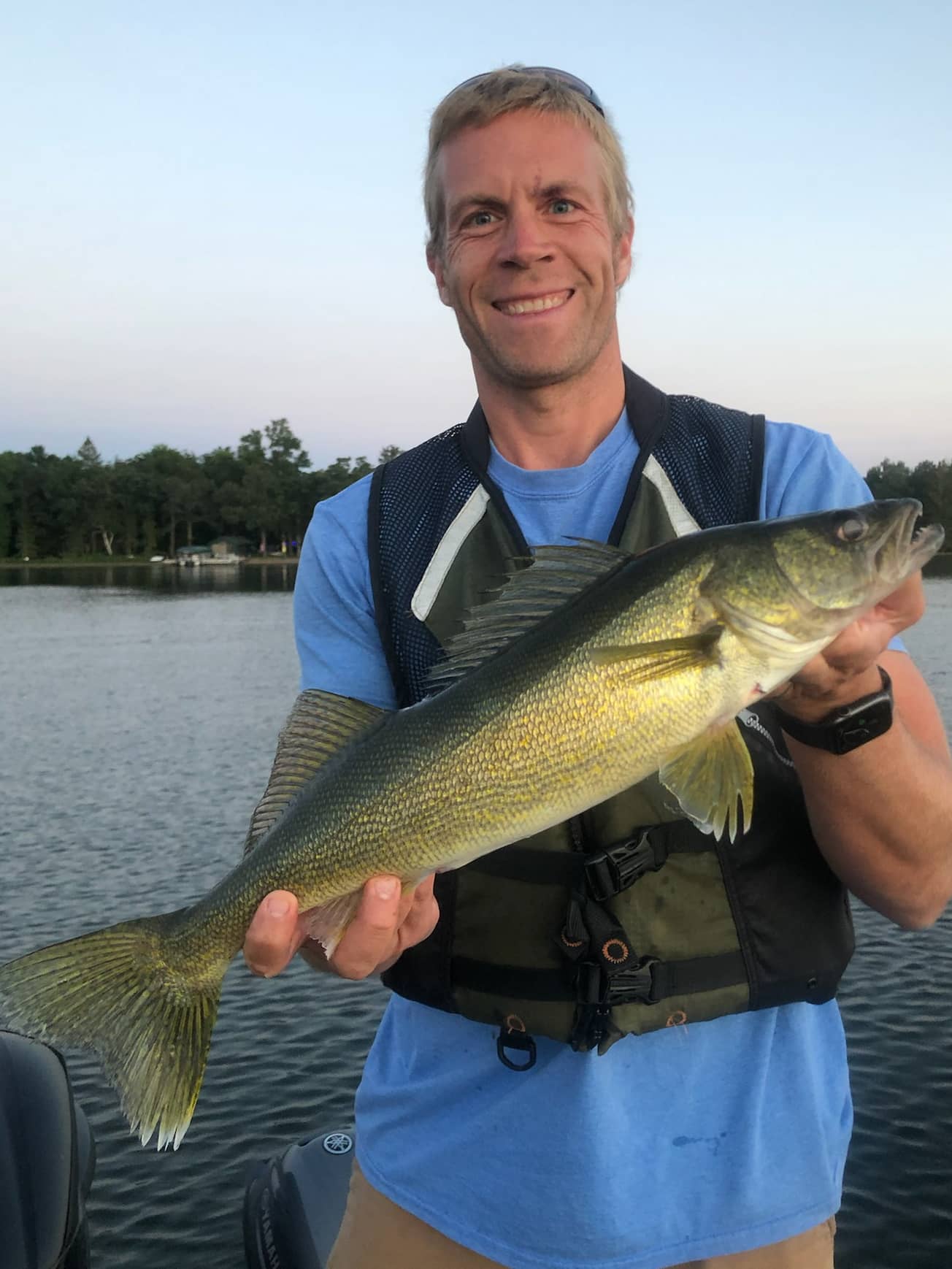
Take A Guess. With a quick formula saved on a phone or inputted into an app, anglers can estimate the weight of their fish without stressing them out, aiding in a successful catch-and-release experience. Simonson Photo.
By Nick Simonson
Catch and release angling isn’t anything new, in fact the conservation tool has been around long enough to have its own acronym of C&R, which is universally known in fishing circles. At the outset, providing the length or maybe the length and girth of that monster fish of the day wasn’t the most glorious statistic for anglers to share at the boat launch after a trip, as success was typically measured in pounds not inches. Over time however, as C&R caught on, anglers began to either accept the tale of the tape as the dominant measurement of a fish or found ways to determine an approximate weight calculation based on fish survey numbers and the resulting equations.
These formulas, which consider length and girth, came to be as more and more fish were caught and various wildlife agencies kept track in their surveys of how long and how big around certain fish were, and then, how much they weighed. This determined a fairly accurate estimate of a fish’s weight, grounded in science, statistics and a large sample size, particularly for those fish that fall within the standard measurements which most anglers see. Admittedly, fish that lie on the larger end of the spectrum may skew these formulas some, as truly legendary specimens that push the bounds of normal length and girth – and state record books – are rarely sampled in agency or creel surveys. But for those everyday fish, like 22-inch walleyes, 18-inch bass or 35-inch northern pike, there’s a quick way to get an accurate estimate of their weight through the formulas developed over the years that requires only a measuring stick and a flexible tape to be in the boat.
Walleye Weight
For walleye anglers, there are two dominant formulas that guide C&R circles, the first being (length x length x length / 2,700) when no girth measurement is present, the second being (length x length x girth / 1,200) when a girth measurement is available. Under each of these formulas, a walleye of 18 inches with a girth of 8 inches would be as follows: 2.17 pounds under formula one, 2.16 pounds under formula two; so pretty precise on both fronts. Where things will start to skew is when those fish approach the high end of the spectrum and the added measurement of girth comes into play. A 30-inch walleye will weigh approximately 10 pounds under formula one, and will be greatly influenced by its girth under formula two, with a 15-inch springtime girth resulting in an estimate of 11.25 pounds. Both formulas have stood the test of time, and certainly for C&R anglers, the first one is the quickest and easiest to calculate with a fast measurement and release.
Esox Estimation
For the pike that live in area waters, the formulas are slightly different, with modifications to the reliance on girth and divisor used. For length only, the first formula is (length x length x length / 3,500) and with a girth measurement, the second formula is (length x girth x girth / 1,000). For muskie anglers, who typically carry a flexible or fabric tape to collect the all-important girth measurement, the formula is (length x girth x girth / 800), to reflect the typically thick body of the fish of 10,000 casts. For a non-girth muskie weight estimate, the length only formula is (length x length x length / 2,800). For the best estimate, run both formulas and take the average of the two for both members of the Esox family.
Best Guess Bass
Finally, for bass, the formulas should seem somewhat familiar by this point. As smallies and largemouth differ slightly in body form, their multipliers vary as well, with the smallmouth bass girth formula being (length x girth x girth / 1,100) and the largemouth girth formula being (length x girth x girth / 1050). The old standard for both species involved dividing by 1,200, but that has changed over the last decade or so with more accurate sampling and comparison points from various creel surveys for both bronzebacks and green bass.
In summation, these quick and easy methods of weighing fish without actually hanging them from a scale help promote quick, low-stress releases that preserve the resource more effectively. Jot these formulas down in your fishing journal this spring to help effectively estimate the weight of your quarry, and continue the growing tradition of catch and release…in our outdoors.
